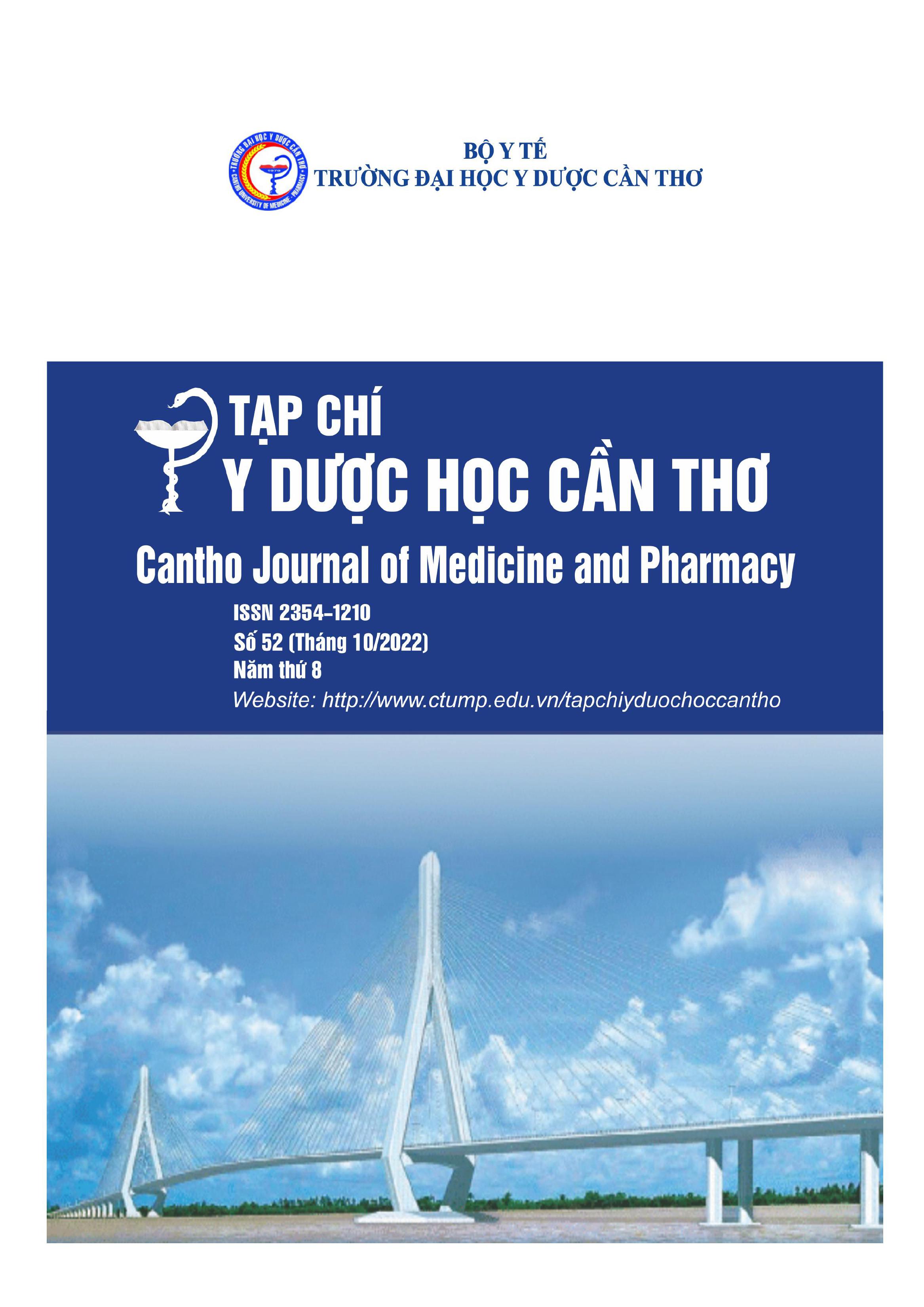CHARACTERISTICS OF INJURY AND RESULTS OF TREATMENT ROTATOR CUFF TEAR OF SHOULDER BY ENDOSCOPIC SURGERY AT CAN THO CITY
Main Article Content
Abstract
Background: Rotator cuff tear is a common injury in the shoulder, the tear of the tendon causes pain, limited shoulder movement, and difficulty in living and working, conservative treatment often gives poor results, requiring surgery to repair the tendon. Arthroscopic transosseous rotator cuff repair arthroscopic repair offers appropriately identify and diagnosis, of patients with smaller incisions, and less soft-tissue trauma, and pain; which results in improved postoperative rehabilitation and quality of patient life. Objectives: Defining the characteristics of the rotator cuff tear of shoulder and evaluating the result of treating rotator cuff tear by arthroscopic surgery. Materials and methods: Prospective, descriptive study, a total of sixty adult patients who had the rotator cuff tear have been cured from January 2020 to March 2022, after more than 6 months of follow-up. Results: In the study, there were 39 male patients, and 21 female patients, the average age was 50.45 years old. An injured shoulder in which left shoulder was 28 patients, the right shoulder was 32 patients. The cause of the tear is usually due to degeneration in 37 patients (61.7%). The rotator cuff suture technique: the double-row technique had 63.3%, and the single-row technique had 36.7%. (Based on the criteria of the University of California - Los Angeles recorded 50 patients with enough time of more than 6 months: 45 patients had 34-35 points (Very good), 14 patients had 28-33 points (Good) and 1 patient had 21-27 points (Fair). Conclusion: Results of arthroscopic treatment repair of the rotator cuff are very positive, which is now the optimal treatment option for this injury.
Article Details
Keywords
Rotator cuff tear, Criteria of the University of California - Los Angeles, double row technique, single row technique
References
2. Tăng Hà Nam Anh (2014), Kết quả điều trị rách chóp xoay qua nội soi. Luận án Tiến sĩ Y học, Đại học Y Dược TP. Hồ Chí Minh.
3. Trần Trung Dũng (2020), Rách chóp xoay, Phẫu thuật nội soi và thay khớp vai, tr. 126-131.
4. Phan Đình Mừng, Trần Đình Chiến, Phạm Đăng Ninh (2019), Nhận xét đặc điểm tổn thương chóp xoay trên chụp cộng hưởng từ đối chiếu với nội soi khớp vai. Tạp chí Y Dược học Quân Sự, tập 44(số 6), tr. 69-72.
5. Nguyễn Văn Phan (2017), Đánh giá kết quả điều trị rách chóp xoay bằng phẫu thuật nội soi. Luận văn Bác sĩ nội trú, Đại học Y Hà Nội.
6. Hoàng Minh Thắng (2020), Đánh giá kết quả phẫu thuật khâu gân chóp xoay khớp vai bằng kĩ thuật hai hàng qua nội soi tại Bệnh viện Hữu Nghị Việt Đức. Luận văn Chuyên khoa cấp II, Đại học Y Hà Nội.
7. Burkhart S. S., Lo I. K. Y., Brady P. C. (2006), Understanding and Recognizing Pathology. A Cowboy's Guide to Advanced Shoulder Arthroscopy, pp.53-109.
8. Claudio Chillemi, Alessandro Castagna, Marcello Osimani (2018), Rotator Cuff Tear: Etiopathogenesis and Histopathology. Arthroscopic Transosseous Rotator Cuff Repair, pp.1-9.
9. Jo J.H. et al. (2010), Effect of age on functional and structural outcome after rotator cuff repair. The American Journal of Sports Medicine, 38(4), pp.672-678.
10. Park J. Y. et al. (2008), Comparison of the Clinical Outcomes of Single- and Double-Row Repairs in Rotator Cuff Tears. The American Journal of Sports Medicine, 36(7), pp.1310-1316.
11. Patrick J. Denard MD., and Stephen S. Burkhart MD. (2011), Techniques for Managing Poor Quality Tissue and Bone During Arthroscopic Rotator Cuff Repair. Arthroscopy Association of North America, 27(10), pp.1409-1421.
12. Richard L. Drake, A. Wayne Vogl, Adam W. M. Mitchell (2020), Shoulder, Gray’s Anatomy for Students, 4th Edition, pp.207-215.
13. Yehia H. Bedeir, Andrew E. Jimenez, Brian M. Grawe (2018), Recurrent tears of the rotator cuff: Effect of repair technique and management options. Orthopedic Reviews, 10(7593), pp.70-76.


